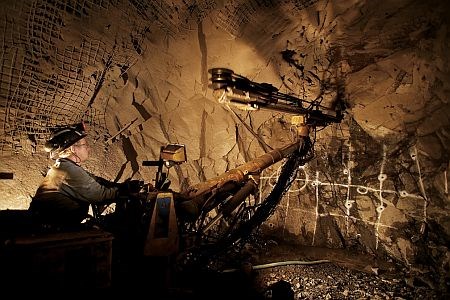One of Sudbury's dormant producers may spring to life in the summer of 2010.
First Nickel continues to take a hard look at the viability of restarting its shuttered Lockerby Mine.
Consulting engineering firm Genivar Ltd. recently updated the feasibility study for the Lockerby Depth Project, shortening the mine's payback period to 14 months and increasing revenues to $588.5 million.
The plan for a seven-year mine life calls for $37 million to be spent on first-year pre-production, with $32-million spent on other capital expenditures and investments. Money for the project will be raised through a combination of debt financing from financial institutions and share offerings to the market, says William Anderson, president and CEO of First Nickel.
This spending allows for the project to achieve production levels of 800 tonnes per day, or 280,000 tonnes per year – rates First Nickel couldn't achieve before.
"Our dilemma with the mine in the last three years of production was when we began life, we didn't have the full decent reserve or development ahead of us," says Anderson. "The premise for buying it is we would have more ore.
"We were right, it took us a couple years or more to do that drilling and get that quantity of ore in place, but at the same time, because we didn't have enough ore reserves – it's a chicken and egg sort of thing – in front of us to justify the development that you need to raise your production rate."
Work at the site had previously ceased at the 65-3 level, although the plan calls for the mine to be dug down to the 70 level. The haulage ramp and some of the access ramps need to be driven down further to allow for the company to achieve its production targets.
Fifteen people remain to care and maintain the site and advance engineering studies. If the project moves forward, staffing levels will jump to 125 during the mine's seven-year life.
Anderson is confident the team will be able to convert resources to reserves, allowing the project to roll beyond the anticipated end date.
One potential sticking point with the project is the exchange rate. The company's numbers are based on a rate of $0.85, with every cent above that number resulting in a $6-million reduction in cash flow.
Currently, the rate sits at $0.93, though Anderson says it likely won't be a problem for the project given that "the economics are still good at $0.90."
Long-term economic predictions indicate a rate in the mid-to-high 80-cent range, he adds, and a rise in nickel prices will likely help offset rate changes.
"We're not in business in the sense that we're producing ore but we haven't lost sight of where we want to be," says Anderson. "I'm feeling pretty good about our situation at the moment."
www.firstnickel.com




